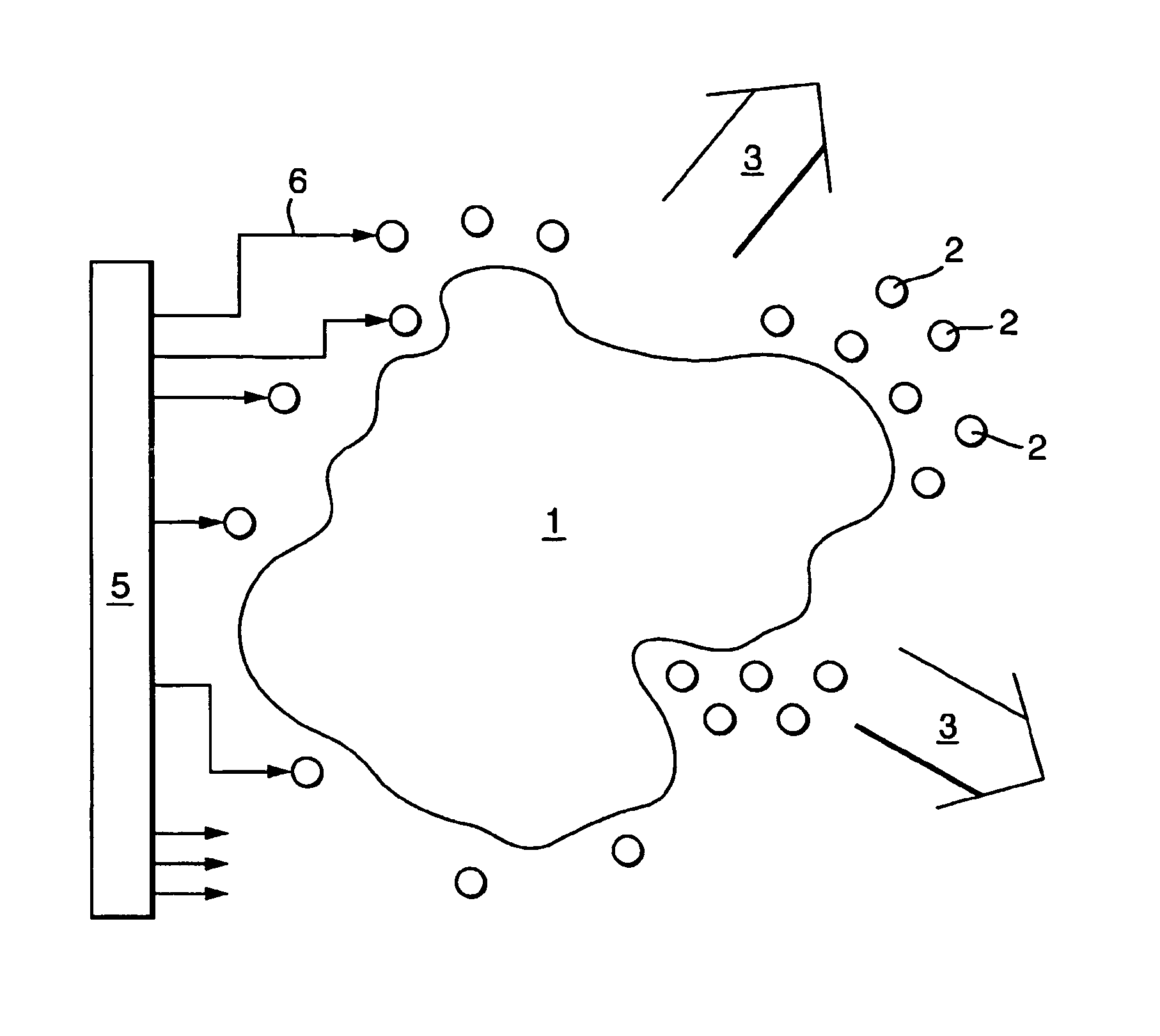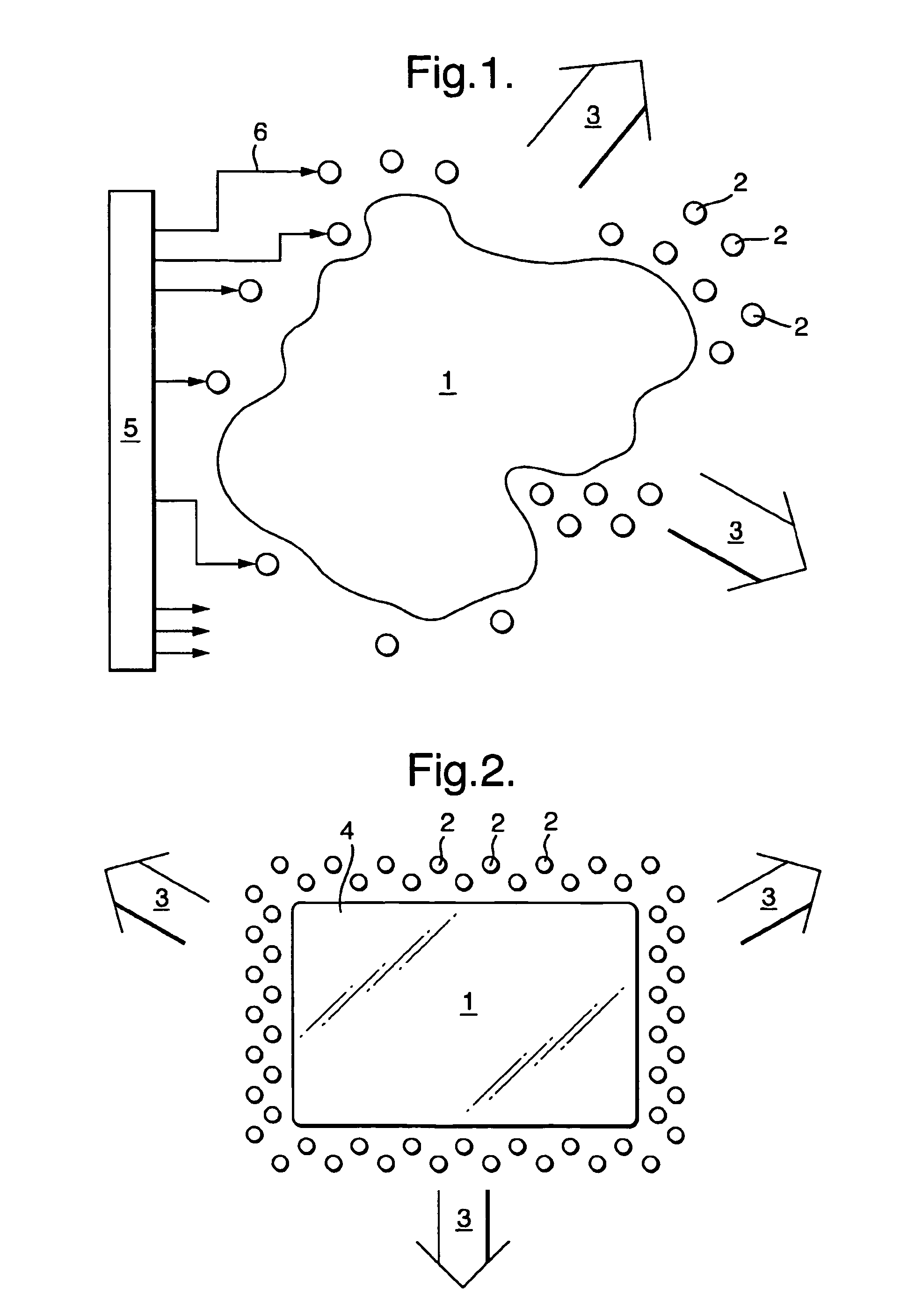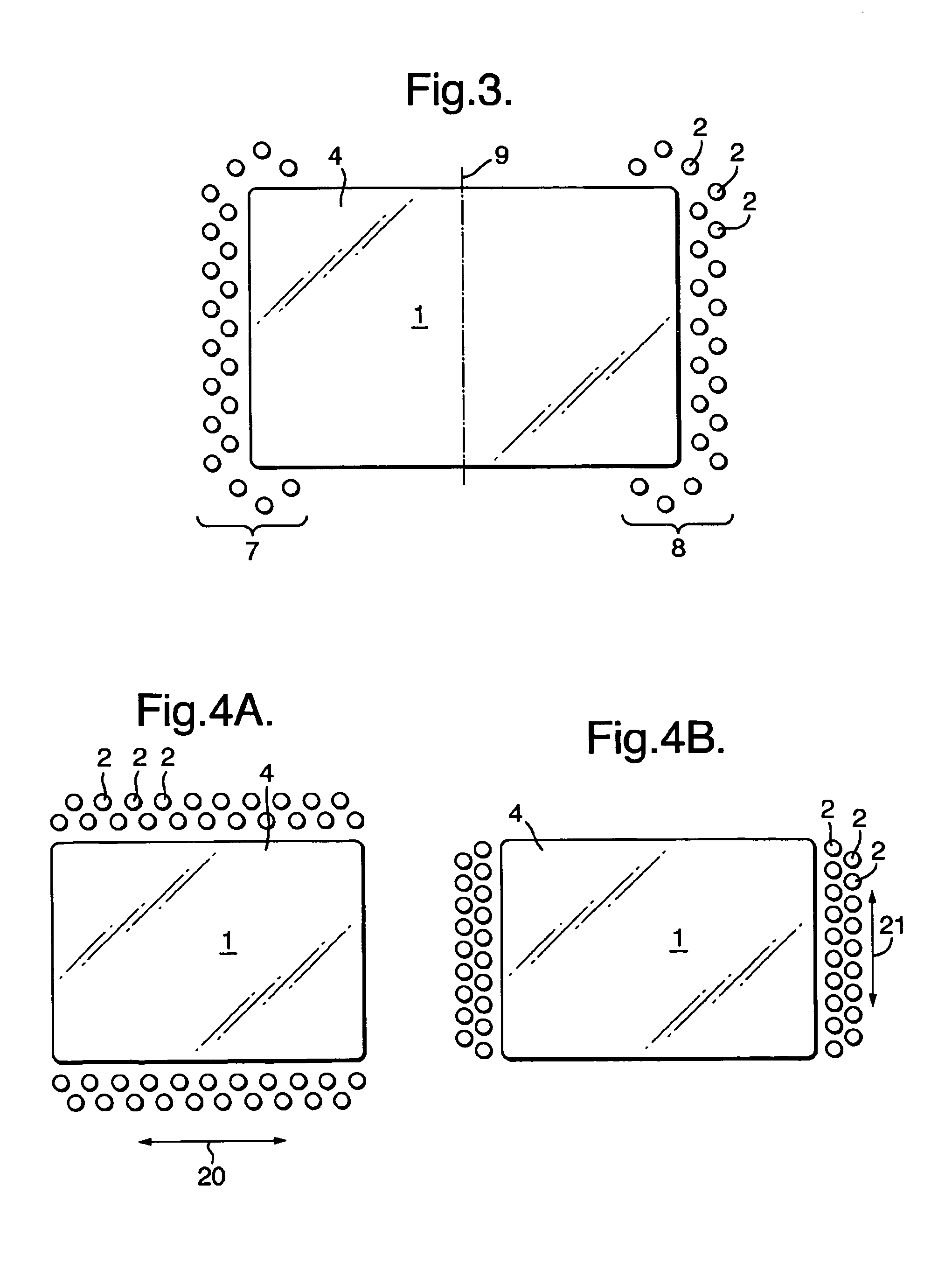Digital Loudspeaker
- Summary
- Abstract
- Description
- Claims
- Application Information
AI Technical Summary
Benefits of technology
Problems solved by technology
Method used
Image
Examples
Embodiment Construction
[0042]FIG. 1 is a schematic representation of an example of a Digital Loudspeaker of the invention. A closed planar region 1 has at its periphery a set of transducers, represented by the closed circles in FIG. 1, three of which are labelled 2. Each transducer 2 is very substantially smaller in area than the region 1. The set of transducers 2 forms a Digital Delay Array Loudspeaker, DDAL, which may be operated in one or more discrete transducer groups, each group preferably forming a DDAL so as to produce one or more different and simultaneous sound fields, represented schematically by the broad arrows 3. The transducers 2 are controlled by DDAL control and drive electronics, shown schematically as enclosed in the box 5. Each transducer 2 is connected to the control electronics, as indicated by arrows of the type 6 (for clarity, not all the connections 6 are shown).
[0043]FIG. 2 is a schematic representation of a further embodiment of the invention. The region 1 about which the trans...
PUM
 Login to View More
Login to View More Abstract
Description
Claims
Application Information
 Login to View More
Login to View More - Generate Ideas
- Intellectual Property
- Life Sciences
- Materials
- Tech Scout
- Unparalleled Data Quality
- Higher Quality Content
- 60% Fewer Hallucinations
Browse by: Latest US Patents, China's latest patents, Technical Efficacy Thesaurus, Application Domain, Technology Topic, Popular Technical Reports.
© 2025 PatSnap. All rights reserved.Legal|Privacy policy|Modern Slavery Act Transparency Statement|Sitemap|About US| Contact US: help@patsnap.com



